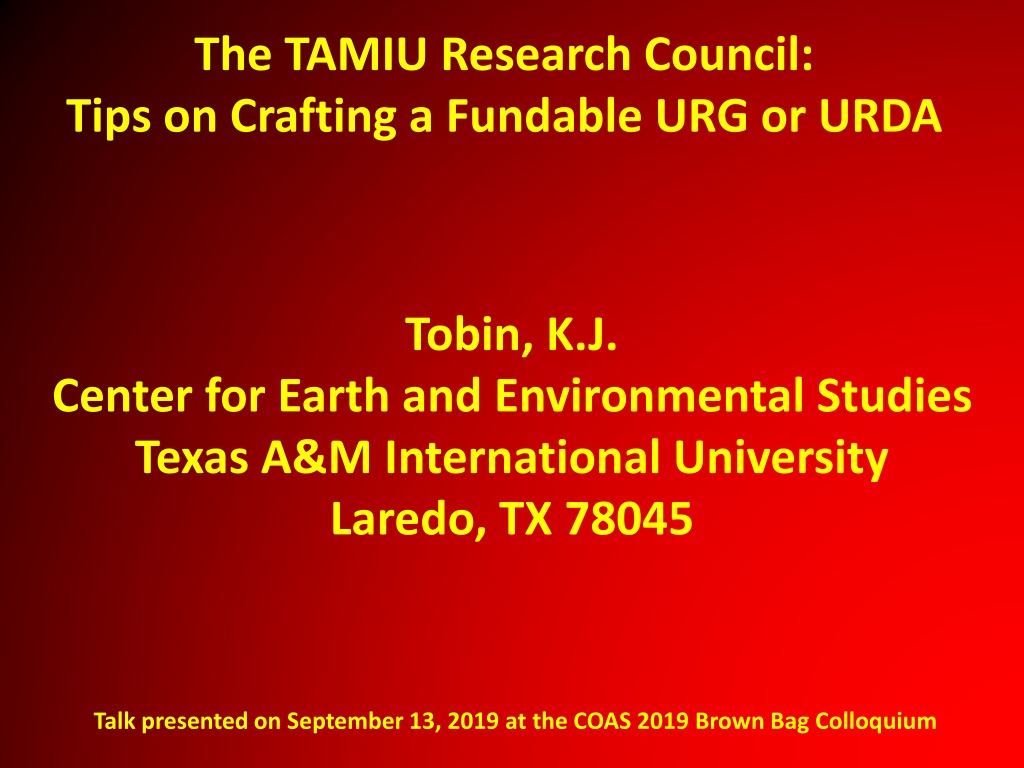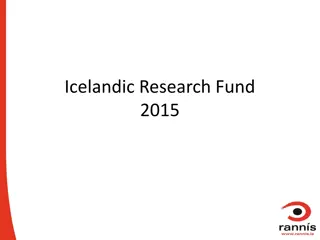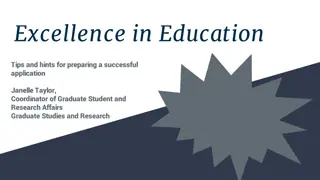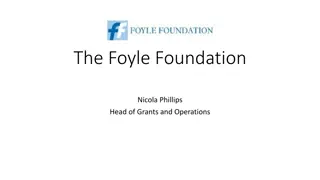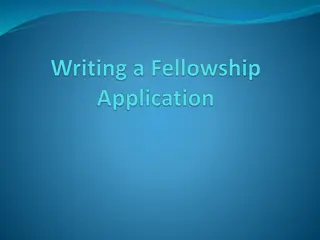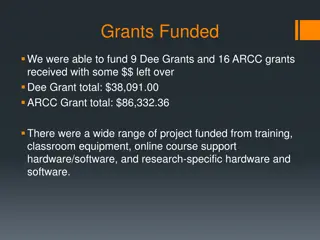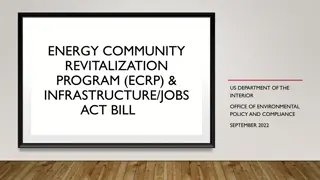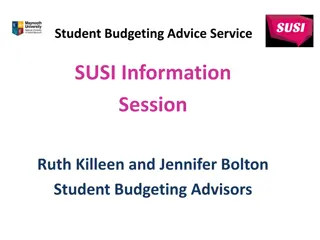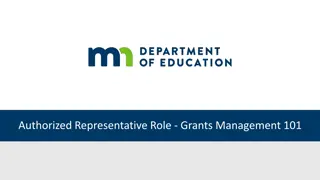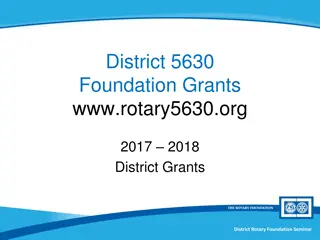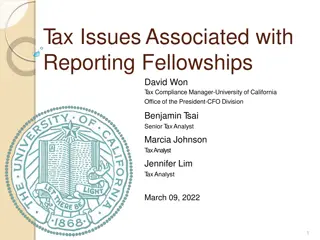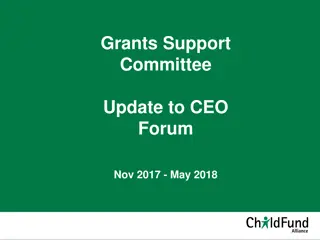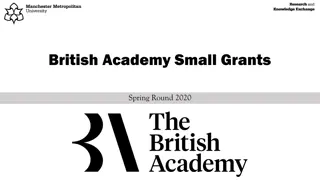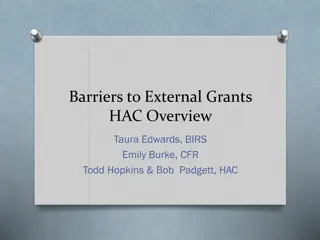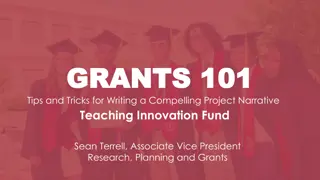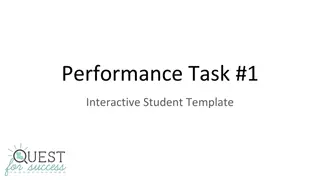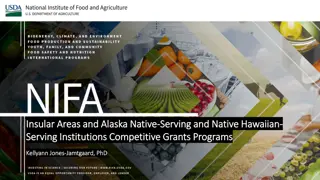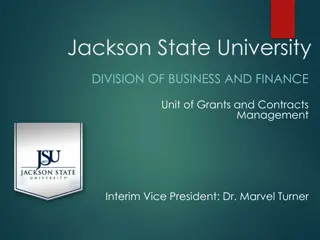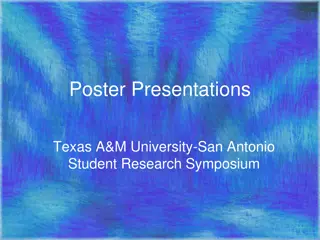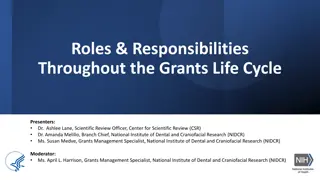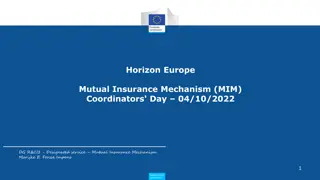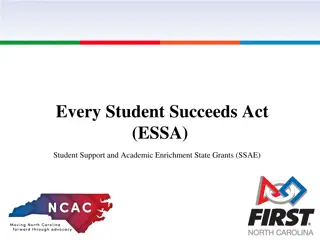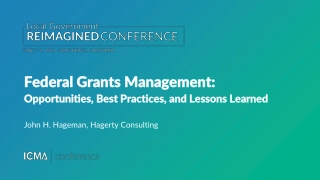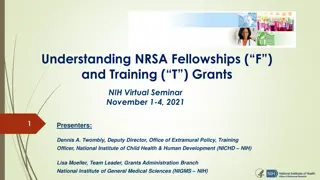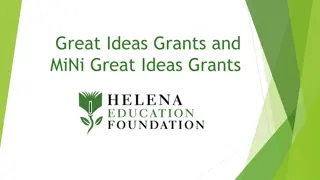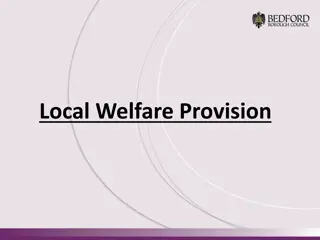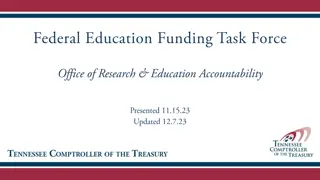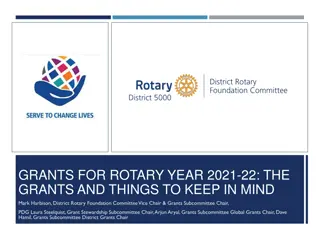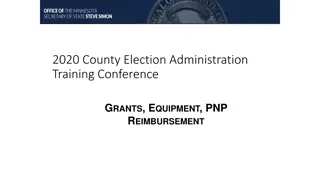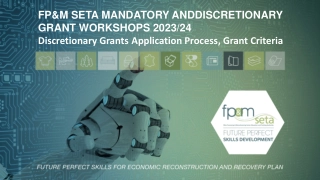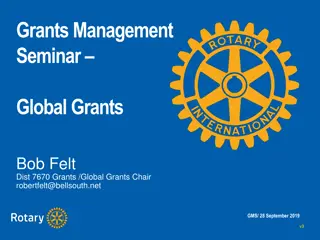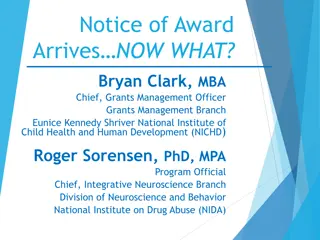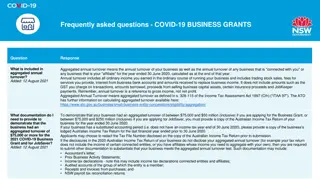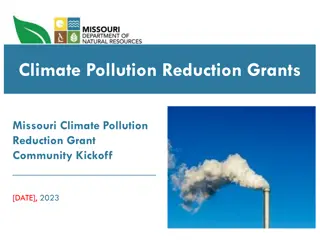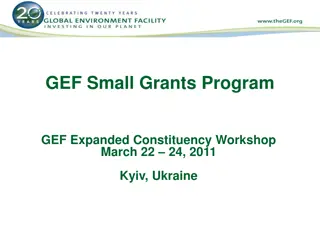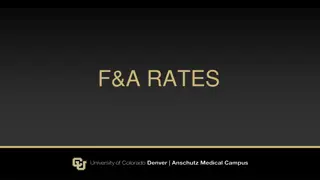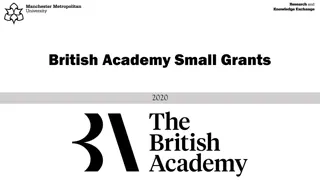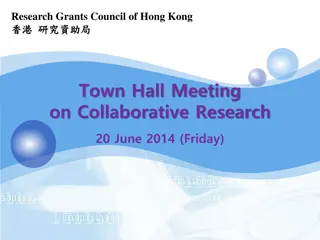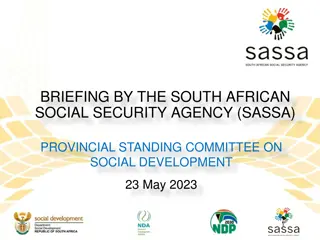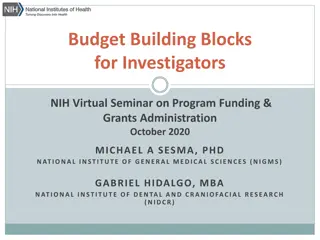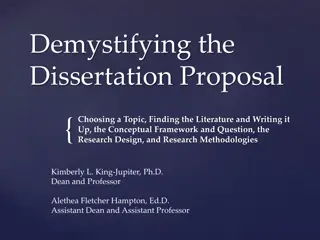Crafting Fundable Research Grants: Tips and Strategies
Crafting fundable research grants requires concise project summaries, inviting narratives, and alignment with review rubrics. Understanding the differences between grant types and following post-award processes are key to success in securing funding.
Download Presentation

Please find below an Image/Link to download the presentation.
The content on the website is provided AS IS for your information and personal use only. It may not be sold, licensed, or shared on other websites without obtaining consent from the author. Download presentation by click this link. If you encounter any issues during the download, it is possible that the publisher has removed the file from their server.
E N D
Presentation Transcript
The TAMIU Research Council: Tips on Crafting a Fundable URG or URDA Tobin, K.J. Center for Earth and Environmental Studies Texas A&M International University Laredo, TX 78045 Talk presented on September 13, 2019 at the COAS 2019 Brown Bag Colloquium
TALK OUTLINE WRITING & SUBMITTING YOUR INTERNAL GRANT Project Summary Project Narrative The Importance of Matching your Narrative with the Rubric Decisions, Decisions: URG, URDA, or Both Deadlines THE REVIEW PROCESS Know your Audience The Reviewers It All Comes Down to Two or Three Numbers The Big Days Hard Decision Times THE POST-AWARD PROCESS Do not be Insulted if You Are Partially Funded Following Through: Make Sure You Submit that External Grant
WRITING YOUR INTERNAL GRANT Project Summary In plain language describe your research objectives and significance of your work. You need to develop a tight story on this one page to convince the reviewers that your idea is worthy of funding. Make sure you proofread this page carefully and focus on readability. Tool: Hemingway App http://www.hemingwayapp.com/
WRITING YOUR INTERNAL GRANT Project Narrative Less is better than more. You want your proposal to be inviting to read. That means no dense text and white space. A picture is worth a thousand words. Tables and Figures are good and are not counted against the page limit. You only have five pages for an URG and ten pages for an URDA. Be concise. Focus more on what you plan to do and not excessively describe the previous work of others. Although obviously you do want to have some references to place your work into an overall context.
WRITING YOUR INTERNAL GRANT Matching the Narrative to the Rubric Examine the URDA/URG/UCPG Rubric handout. This should be your guide when writing your project narrative. Here are some common mistakes that will cost you points. - Not addressing the prospects for external funding. - No or limited details on timeline or work plan provided. - Budget is not consistent between the narrative and the budget justification. The more details in the justification the better. - The role of outside collaborators, Co-PI s, and students is not well explained. If students are involved in your work you need to highlight this!
WRITING YOUR INTERNAL GRANT URG vs. URDA An URG is a one-year proposal funded at a maximum of $10,000 An URDA is a two-year proposal funded at a maximum of $25,000 You can only be funded for a URG or URDA, but not both! You can only submit one URG and one URDA. The council generally prefers to fund URG s over URDA s If you are going to write a URDA make sure its - Not similar scope of work to URG submitted in same competition - Make sure it is really good. MOST YEARS THE COUNCIL OPTS TO FUND ONLY 1 TO 2 URDA s
All 4 grants due 10/1/19 by 5PM Grant name Award Period 9/2019 8/2020 Amount Purpose Requirements University Travel Grant (UTG) Maximum $1,000; data collection $2000 Maximum $5,000 Data collection, Research presentation; performance or exhibit Creative projects with limited external options for funding Research projects, especially preliminary data collection Research projects requiring longer time period or higher dollar amount than URG 1 final report University Creative Projects Grant (UCPG) University Research Grant (URG) 9/2020 - 8/2021 1 final report; external grant strongly encouraged 1 external grant; final report 9/2020 8/2021 Maximum $10,000 (student - no funds) Maximum $25,000 + graduate assistant University Research Development Award (URDA/URG) 9/2020 8/2022 3 external grants; progress report; final report
SUBMITTING YOUR INTERNAL GRANT Deadlines The announcement for internal grants is typically made later spring or early summer. The proposal deadline is October 1st at 5 pm. Proposal DON TS Submitting after the deadline (your proposal will be bounced) Submitting an incomplete application While submitting the same day as the deadline is acceptable it is not ideal. If you have your proposal ready at least two weeks in advance the grant office will look it over and give you feedback.
Problems with applications Missing parts must submit both a signed complete hard copy and submit email file(s) to grants@tamiu.edu, both must be received by 5PM on the deadline date Missing signatures if asking for a full-time student, you must have chair and dean s signatures; if asking for summer pay you need your chair signature only URDA/URG can t be in both competitions unless you submit both applications SUBMIT EARLY
THE REVIEW PROCESS The Reviewers Remember my guidance to you to know your audience. For the internal grant competition it is highly likely that at least one of your reviewers is not in your field. Reviewer assignments are generally made at the level of STEM and Non-STEM. So write your proposal accordingly. Dense, discipline-specific terminology packed prose will not impress the reviewers. Write your grant at the level of an intelligent lay person. Don t forget about general readability. Make sure there are no obvious grammar or spelling mistakes.
THE REVIEW PROCESS The Reviews Your proposal will be evaluated on a hundred point scale. See reviewer form in your handout. If two reviewers scores you over 20 points difference than a third reviewer will be added. At the end of the process you will have this form returned to you. The comments can be quite useful in helping with future submissions. Sometimes the funding recommendation can come into play (Recommended, Not Recommended, Conditional)
THE REVIEW PROCESS The Big Days During the fall, the research council will meet twice. The first time to discuss Travel Grants and the second to decide on URDA, UCPG, and URG s. Typically there is twice as much money in requests for then is available to spend. Most councils will begin by deciding on the URDAs followed by the URGs and UCPGs. IMPORTANT: The council has a 50% turn over every year. So not one council ever decides how to allocate the funds in the same way.
THE REVIEW PROCESS The Big Days Typically two lines will be drawn. Above the top line URGs and UCPGs will be fully funded and above the second partially funded. To extend the second line down as far as possible the council has looked at removing the following items from proposals: - Course Releases - Summer Salary - Travel (Don t ask for more than $2000 unless its part of your research) Understand that the council s goal is to fund as many quality proposals as possible (even if partially funded).
THE POST-AWARD PROCESS Partial Funding and Other Details Do not be insulted if you are partially funded. As you can see the council has to make some tough decisions. Near the end of the fall semester after the council meets you will receive an award letter. If partially funded you will have the option to modify your proposal or decline. Understand that the performance period of your internal grant will begin on September 1 of the following year (2020). It is always a good idea to get a head start on hiring during the summer as well as lining up quotes for equipment and supplies.
Funding Success Rates 2010-2019 100% 90% 2010-11 80% 2011-12 70% 2012-13 60% 2013-14 2014-15 50% 2015-16 40% 2016-17 30% 2017-18 20% 2018-19 82% 75% 28% 69% 10% 2019-20 0% UTG* URG URDA UCPG 2018 NSF overall BIO success rate = 24%; 2018 NIH R15 rate = 16.2%
Compliance Issues that can delay release of your funds Financial Conflict of Interest (FCOI) - private interests that can influence professional actions or decisions (Annual disclosure in MAESTRO, TrainTrac training every 4 years) Responsible Conduct of Research (RCR) research ethics training (CITI training every 4 years) Institutional Review Board (IRB) - human subject research (CITI training every 3 years) Institutional Animal Care and Use Committee (IACUC) - animal subject research (CITI training every 3 years) Institutional Biosafety Committee (IBC) - biosafety research (CITI training every 3 years)
Problems with grant management Difficulties finding/hiring student research assistant Delays in release of funds due to research compliance issues Difficulty finding external grant when searching not started early in award If external grant is not applied for and/or final report not submitted, you can t apply for any intramural grant for 2 yrs
THE POST-AWARD PROCESS Following Through Remember that besides conducting your research that you need to submit one external grant (URG) or three grants (URDA). Failure to comply with the required submissions will affect your eligibility to submit URG s and URDA s in the future. Potentially even after the 2 years that you will barred from submitting an internal grant. If the grant program you want to submit to has a deadline outside of your internal grant s performance period you can always file for an extension.
Grant and Compliance Information Visit our webpage: https://www.tamiu.edu/orsp/index.shtml Funding sources tab University Research Council has intramural grant applications, report forms Research Compliance tab - all compliance areas
